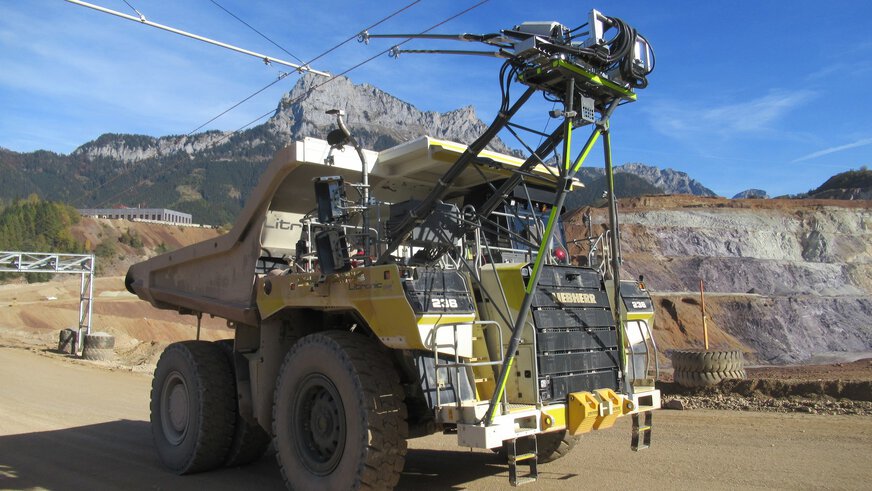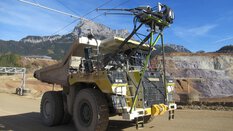Current trends for a more environmentally compatible mining industry
Mining strives for climate protection and resource efficiency
- Trending topic: electrification of mining fleets
- Mining sites with green power generation
- Smart systems for greater resource efficiency
“Throughout the world, mining companies are faced with the task of increasing their productivity—while operating as sustainably as possible,” says Klaus Stöckmann. The mining expert from the Mechanical Engineering Industry Association (VDMA) continues: “In recent years, investors for instance have been increasingly incorporating the ESG triad into their financing decisions.” ESG refers to the consideration of environmental, social and governance criteria.
Good arguments for fewer emissions
Reducing emissions is at the top of the agenda of the mining sector's environmental goals. “This is where environmental protection and economy come together in an exemplary manner, as fewer exhaust gases underground not only serve to protect the climate, but also save costs in the supply of fresh air,” explains Stöckmann. And what is more are occupational health and safety aspects. In Germany, for example, new, ambitious occupational exposure limits (OELs) for nitrogen monoxide and dioxide are to be applied in the mining industry from November 2021. The OELs for carbon monoxide and particulate diesel engine emissions will also be tightened.
Heavy-duty truck with overhead line
In response to these challenges, mine operators are increasingly using electromotive drives. For example, at the 2019 edition of the international construction machinery trade fair bauma, Austria's VA Erzberg GmbH and machine manufacturer Liebherr concluded a development contract for an overhead line assistance system for a diesel-electric heavy-duty truck. To date, the world's largest siderite deposit in Eisenerz/Austria has consumed around 4.5 million liters of diesel per year to transport 13 million tons of rock. With the new system, it should be three million liters less in the future, equaling 4200 tons of carbon dioxide.
Battery-electric solutions wanted everywhere
While cable-connected electric machines have long been commonplace in the mining industry, battery-powered solutions have also been in the spotlight for some years now. On the manufacturer side, Epiroc AB, for example, set itself the goal of offering its complete fleet of underground mining equipment as battery-electric versions by 2025. The Swedish machine builder's e-portfolio already includes loaders, mine cars and drilling rigs. And also users are getting on board with this trending topic. One example: Rio Tinto, one of the world's largest mining companies, aims to reduce its absolute emissions by 15 percent by 2030 compared to a 2018 baseline. According to the company's Climate Change Report 2020, achieving this goal includes a fully battery-electric mobile fleet.
Best with green electricity
Anyone who is serious about climate protection must also ask where the electricity used in the machines comes from. In this context, a growing number of mining companies are testing solar, wind and battery storage systems at their sites. The report “The Renewable Power of the Mine", which was published at the end of 2018 and prepared by the Columbia Center for Sustainable Investment with financial support from German development cooperation, provides a corresponding overview including many case studies.
Resource efficient thanks to digitalization
Another aspect of modern mining that is becoming increasingly important—especially from an environmental point of view—is resource efficiency. “This is where ecology and economy meet the trending topics of automation and digitalization,” says Prof. Elisabeth Clausen. The Institute for Advanced Mining Technologies at the Rheinisch-Westfälische Technische Hochschule (RWTH) Aachen, which she heads, develops robust, networked, and autonomous systems as well as smart sensor and data-based applications for the mining industry. “We want to use them, for example, to localize and navigate vehicles, recognize people and objects, characterize materials, and automate and optimize processes,” the expert outlines.
Selective extraction with environmental benefits
According to her, one of the main objectives of the targeted solutions is to extract the respective raw material as selectively as possible. “This automatically entails ecological benefits,” the professor emphasizes. For example, digital environment recognition could be used to continuously analyze the geological structures of the deposit during extraction. “The better the recognition, the more precise the mining, the less overburden, the lower the energy consumption during extraction and the lower the transport expenses,” Prof. Clausen describes one of the environmentally relevant causal chains. In addition, according to her, sensor and data-based solutions and technologies can lead to deposits with low raw material contents, which are not exploitable technically and/or economically today, still being mined economically in the future—also a step towards higher resource efficiency.
Electrically driven machines, sustainability aspects and the concepts of “Mining 4.0” are among the exciting and future-oriented topics that were discussed at bauma 2022. The World’s Leading Trade Fair for Construction, Building Material and Mining Machines and Construction Vehicles and Equipment took place from October 24 to 30, 2022 at the Munich trade fair center.




